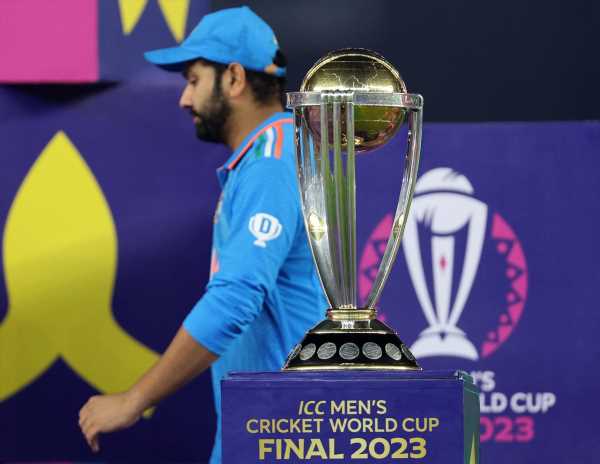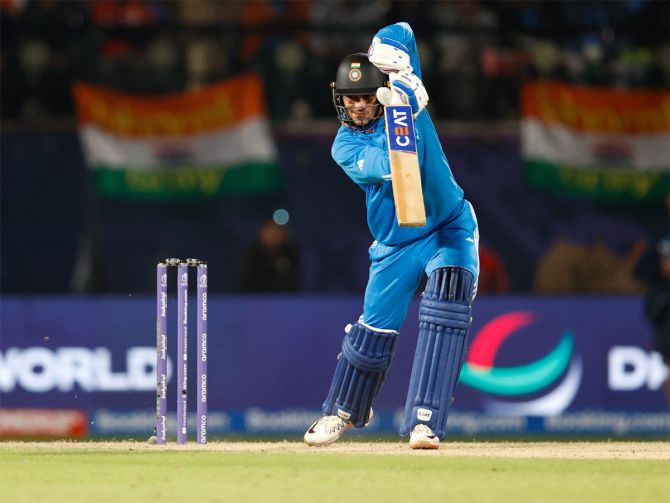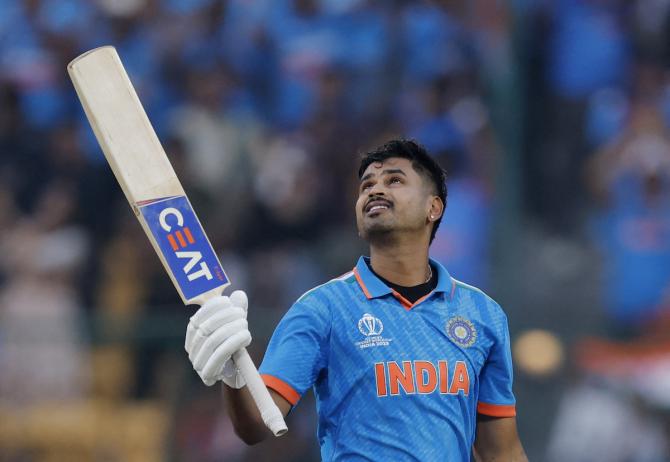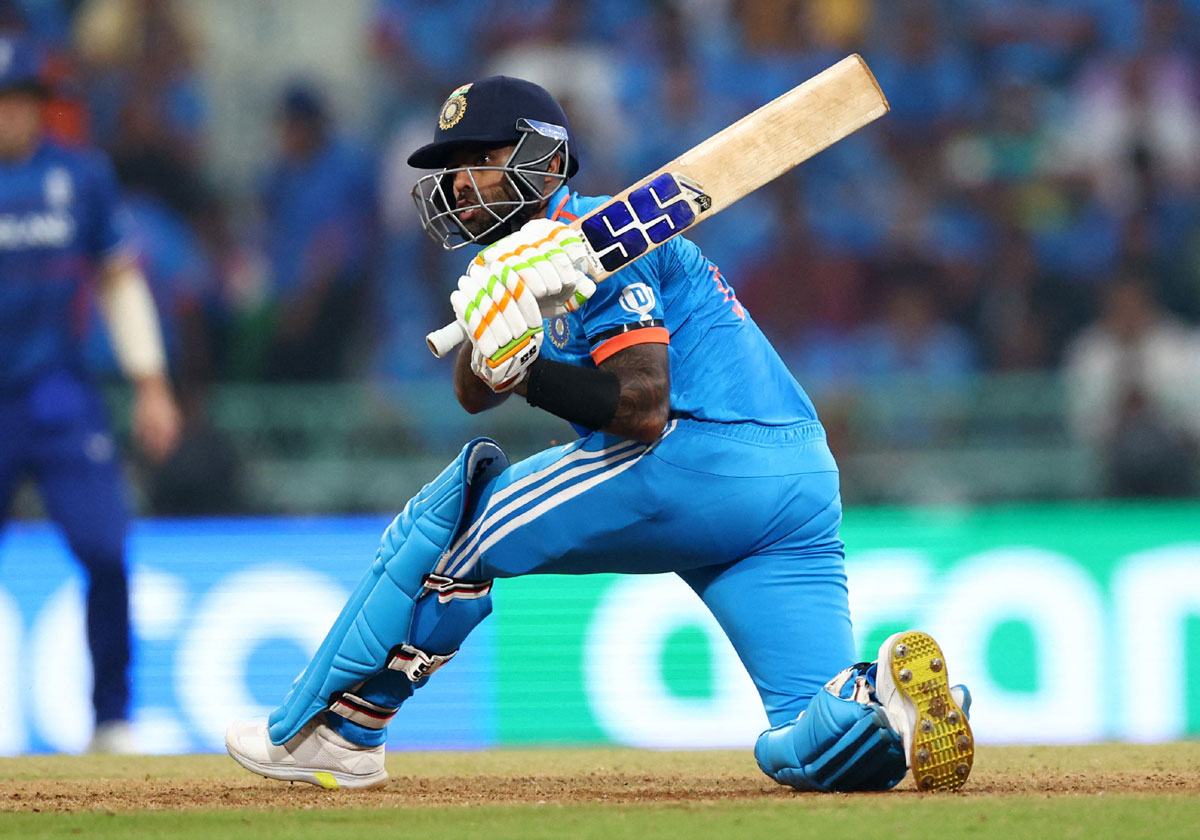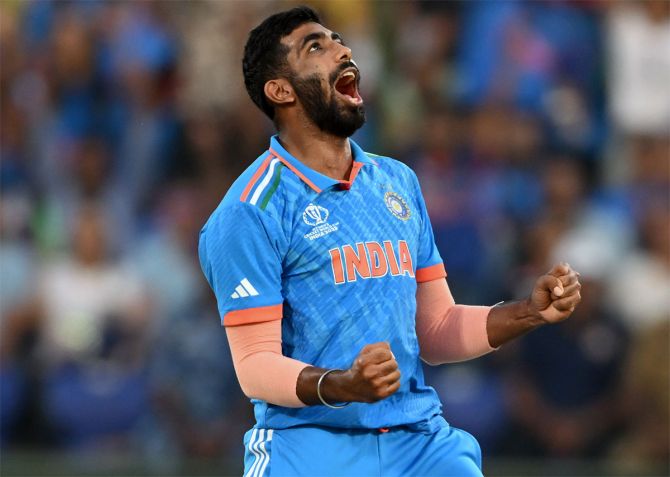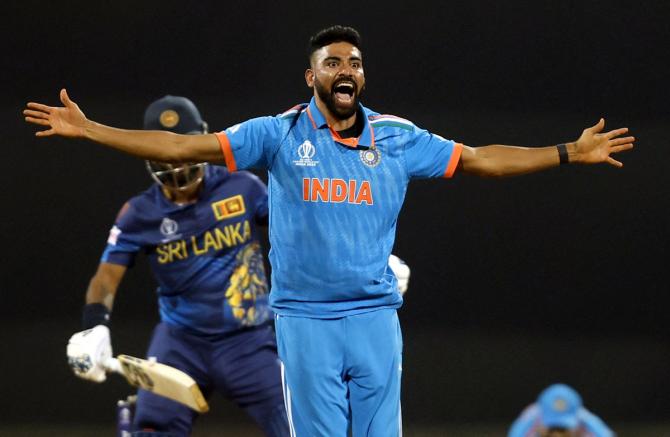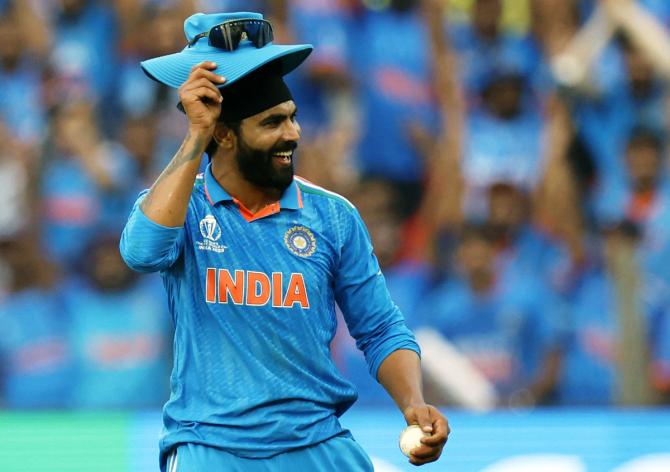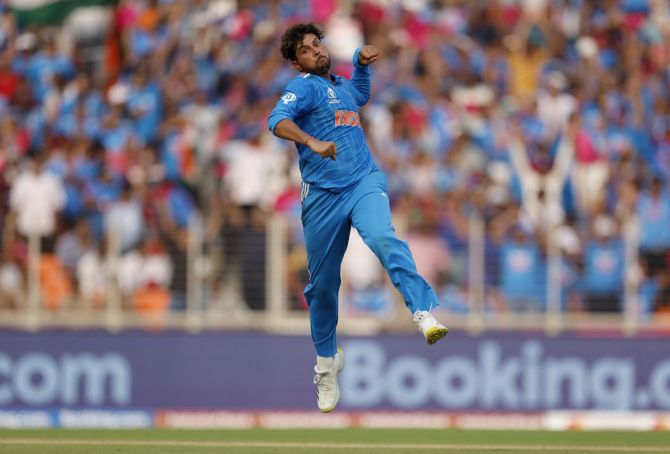The collective brilliance of the Indian XI in the 2023 World Cup makes a compelling case for each player to be considered for inclusion in every World XI.
In a rollercoaster of triumph and heartbreak, India’s World Cup journey was led by Rohit Sharma’s stellar squad.
In a whirlwind month-and-a-half, they aced all 10 matches, weaving a tale of relentless determination and dreams of raising cricket’s top trophy.
As the date with destiny arrived on November 19, India found themselves in a monumental clash against the historically formidable ODI powerhouse, Australia.
With five World Cup victories under their belt, the Aussies, although less ruthless in recent times, boasted an imposing resume, crowned by T20 World Cup glory two years prior and the World Test Championship title earlier in 2023.
India’s path to glory was paved with challenges, but the triumph in the Asia Cup served as a thunderous warning to the cricketing world.
Undoubtedly, India emerged as the standout team in the 2023 World Cup, a force that dominated opponents in every facet of the game.
Until the final showdown, Rohit Sharma’s warriors outclassed their rivals, with Virat Kohli standing tall as the leading run-scorer, and Mohammed Shami reigned supreme as the leading wicket-taker.
Yet, destiny had its own narrative, and Australia emerged victorious in the final, showcasing the unpredictable nature of cricket.
This defeat, however, does not dim the brilliance of India’s campaign; they played like true champions, a journey that the nation should cherish with immense pride.
The future holds the promise of more memorable moments for this Indian team. In fact, the collective brilliance of the Indian XI in the 2023 World Cup makes a compelling case for each player to be considered for inclusion in every World XI.
Rohit Sharma
Leading from the front, Rohit demonstrated outstanding leadership for Team India. His remarkable achievement of accumulating 597 runs at a strike rate exceeding 100 reflects his formidable prowess.
Rohit’s captaincy played a crucial role, especially in his shrewd field selection and strategic bowling changes, earning him widespread acclaim.
Beyond fulfilling his leadership responsibilities, Rohit left an indelible mark with the bat, securing the position of the second-highest run-scorer.
Juggling the intricacies of run-scoring and quick-scoring can be a challenge, but Rohit navigated this with exceptional skill throughout the entire tournament. His knack for contributing consistently with the bat, coupled with astute captaincy decisions, highlights the multifaceted role he played in Team India’s resounding success.
Shubman Gill
In the face of adversity, Gill displayed remarkable resilience during the World Cup.
Initially dropped for the first two matches due to dengue fever, Gill made a strong comeback in the crucial clash against Pakistan. His impactful performance throughout the tournament resulted in an impressive total of 354 runs in nine matches, boasting an average of 44.25 and a striking rate of 106.94.
The 24-year-old opening batter excelled with four half-centuries, including a pivotal unbeaten 80 in the semi-final against New Zealand. However, his contribution in the final against Australia, held at his IPL franchise Gujarat Titans’ home ground, amounted to just 4 runs.
Despite the mixed outcomes, Gill’s overall display highlighted his resilience and batting prowess on the global stage.
Virat Kohli
Kohli unleashed his dominant form, culminating in a run tally that could remain unparalleled in World Cups for decades. Leading the overall run chart, Kohli accumulated an impressive 765 runs in 11 matches, featuring three centuries and six half-centuries.
His skill propelled him to surpass Sachin Tendulkar, claiming the record for the most ODI tons in history — reaching a remarkable 50. This historic achievement unfolded during India’s triumphant semi-final clash against New Zealand.
Operating as the driving force in India’s batting line-up, Kohli’s prolific run-scoring emerged as the crucial element in ensuring that India capitalised on the promising starts initiated by Rohit.
Shreyas Iyer
Batting confidently at the No. 4 position, Iyer silenced his critics. In the semi-final, he achieved his second century, scoring an impressive 105 off 107 deliveries, including four fours and eight sixes. In all in this World Cup, Iyer scored 530 runs in 11 matches.
Despite contending with injury issues before the tournament and a slow start, the management maintained their trust in Iyer, and he reciprocated by showcasing a series of sensational shots throughout the campaign.
Notably, Iyer became the third Indian batter to achieve back-to-back centuries in ODI World Cups, accomplishing this against The Netherlands and New Zealand. Although he couldn’t leave a mark in the final, being dismissed for 4 runs by Pat Cummins, his overall performance in the tournament remains highly commendable.
K L Rahul
Like Iyer, Rahul silenced critics.
Following Rishabh Pant’s unfortunate car accident, the wicket-keeping responsibility naturally fell on Rahul, consistently Rohit’s preferred choice, despite occasional appearances by Sanju Samson in ODIs or T20Is.
Rahul’s consistency and reliability in the middle order have been significant in this tournament, complemented by a century in this campaign.
Despite facing challenges as a wicket-keeper in the final, Rahul showcased tidy and occasionally spectacular performances behind the stumps throughout most of the tournament. His astuteness in using the Decision Review System (DRS) added another layer to his skill set.
As the No. 5 batter, Rahul emerged as the top run-scorer in that position (452), with only Quinton de Kock (594) scoring more runs as a wicket-keeper. In the final, he contributed a crucial 107-ball 66, securing the position of India’s top-scorer.
Suryakumar Yadav
In his ODI World Cup debut, Yadav, the world’s number 1 ranked T20 batter, faced a challenging tournament, managing only 106 runs in seven innings. His runs came at an average of 17.66 and a strike rate of 100.95.
Although he fell short of expectations in the final, departing after scoring 18 runs off 28 deliveries, there’s hope for his future performances.
Positioned at No. 6, Yadav relied on the top-order batters’ performance but always had the ability to contribute with quick boundaries in the death overs. The future holds promise for Suryakumar to showcase his true potential in upcoming tournaments.
Mohammed Shami
Shami entered the squad following Hardik Pandya’s injury, and since then, he was exceptional.
Although he missed the first four matches, Shami concluded as the leading wicket-taker with 23 wickets in 7 matches.
The pacer delivered a standout performance with a seven-wicket haul in the semi-finals, propelling him to the top of the overall wickets chart.
Renowned for arguably the best seam presentation globally, Shami’s ability to move the ball off the pitch left batters with minimal time to adjust.
His economy rate stood at 5.01, and he secured three five-wicket hauls along with one four-wicket haul. Shami’s precision in line and length, coupled with his feared yorkers, made him a formidable force.
His arrival elevated India’s already formidable pace attack to the best in the tournament.
Jasprit Bumrah
India’s pace spearhead wrapped up the World Cup as the fourth most successful bowler, securing 20 wickets in 11 matches at an average of 18.65. His ability to swing the ball both ways made him an indispensable asset for the team.
Bumrah’s remarkable economy rate of 4.06, particularly during fielding restrictions, distinguished him in the tournament.
In a crucial match against England, he delivered an exceptional performance, claiming 3/32 in 6.5 overs, dismissing key players like Dawid Malan and Joe Root.
Another standout moment occurred against Pakistan, where Bumrah’s two deliveries resulted in the crucial wickets of Mohammad Rizwan and Shadab Khan, marking them as among the finest moments in World Cup 2023.
In the clash against Afghanistan, Bumrah continued to shine, securing 4/39 in 10 overs. His masterful display with the old ball prevented Afghanistan from capitalising on the launchpad they had established in the death overs.
Overall, Bumrah’s performances underscored his prowess as a match-winning bowler throughout the competition.
Mohammed Siraj
Siraj played a crucial role through the tournament, especially in the high-stakes match against Pakistan. On that occasion, he made significant contributions by dismissing in-form batter Abdullah Shafique to break the opening stand and then claiming the prize wicket of their star captain, Babar Azam.
The fast bowler picked up 14 wickets in 11 matches, showcasing his effectiveness with the scrambled seam, particularly evident in a three-wicket haul against Sri Lanka.
In the final, Siraj dismissed Travis Head, although it came a little too late as the Australian opener had already scored a century by then.
The trio of Siraj, Bumrah, and Shami consistently bowled at a rapid pace, frequently surpassing 140 kmph, marking a historic achievement for India with three seamers hitting this speed simultaneously.
Their combined efforts were defined by sustained pace, a persistent line and length, and the capability to extract movement from diverse surfaces, establishing them as a formidable force throughout the World Cup.
Ravindra Jadeja
Jadeja played a pivotal role for India in the World Cup, positioned at No. 7, showcasing his versatility as an all-rounder.
Although not extensively required with the bat, he proved handy in crucial moments, particularly in the death overs. His spin abilities became instrumental for Rohit in tight situations, contributing significantly by taking key wickets.
Jadeja’s consistency was evident throughout the tournament, scoring 120 runs at an average of 40 and a strike rate of 101.69. With the ball, he claimed 16 wickets in 11 matches.
In addition to his all-round contributions, he displayed magnificence in the field, taking seven catches, including three in the semi-final against New Zealand.
Kuldeep Yadav
Kuldeep delivered an outstanding performance as India’s front-line spinner. He secured 15 wickets in 11 matches, maintaining an impressive economy of 4.45.
His best figures came against Bangladesh, where he showcased his ability to deceive batsmen with flight and turn. The left-arm wrist-spinner played an instrumental role in India’s success in the tournament, displaying his reinvented bowling prowess.
Kuldeep’s success in the World Cup was a story of resilience and reinvention. His partnership with Ravindra Jadeja formed a formidable spin duo that effectively stifled opposition batting line-ups during the middle overs.
Source: Read Full Article
